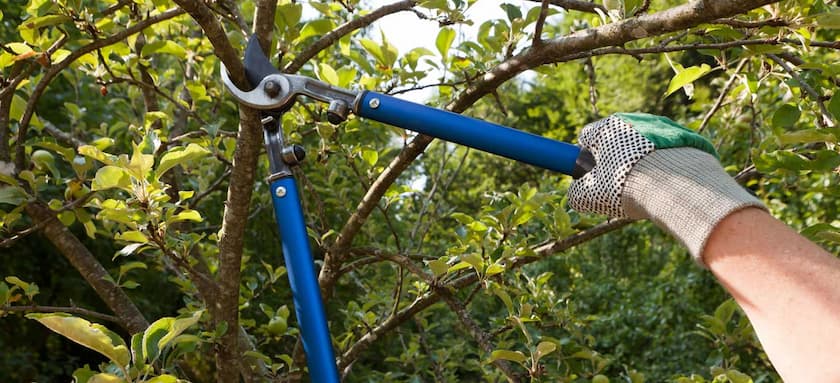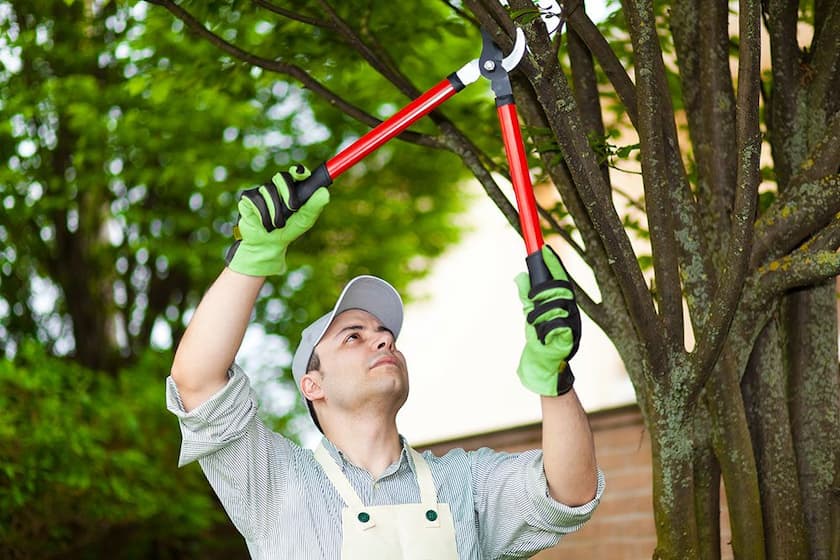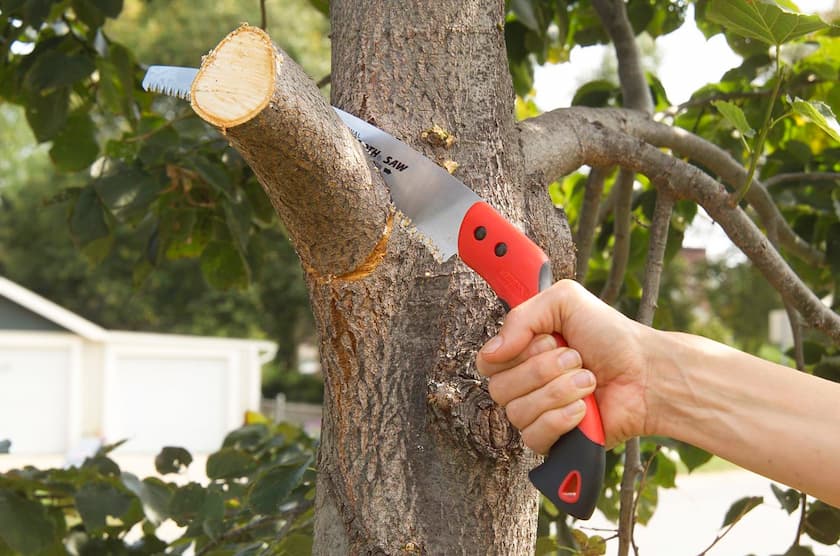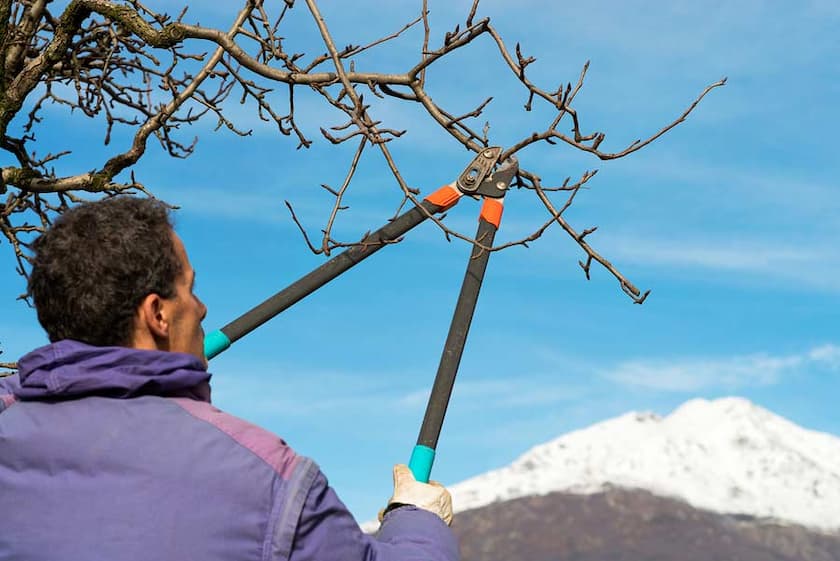Trees are one of the most valuable addition you can include in your yard. They are a great way to enhance the home’s curb appeal, offer us privacy and shade from the sun, and some even give us fruits to enjoy. And not only are they valuable for humans, but they’re also many animals’ habitat and make sure that all of us have enough oxygen to breathe.
That said, having a couple of trees in your backyard is a true blessing, and that’s why you should take care of their well-being as much as they do for yours. And when it comes to taking care of your lovely trees, proper and timely pruning is essential to keep them healthy.
 Source: loreblogs.com
Source: loreblogs.com
What Is Tree Pruning?
Pruning trees is a horticulture process of carefully selecting and removing unwanted branches. This improves the tree’s structure and promotes new, healthy growth. If you’re in doubt whether your trees need pruning, there’re a lot of professional tree surgeon services which offer a free assessment for your garden.
The Benefits of Pruning
If you thought that the tree trimming services shape your trees only to improve their appearance, you’re wrong. The benefits of pruning your trees are far beyond creating a pleasant outdoor area.
For Your Trees
If not handled on time, any damaged, diseased and broken limbs can be harmful to the tree’s health and cause further decays. On the other hand, pruning the trees properly can increase the airflow through the air canopy, which is helpful to reduce leaf diseases. If you’re having a couple of fruit trees in your backyard, trimming the excess branches off will also improve the size and the quality of the crop.
But, have in mind that pruning your trees doesn’t mean crippling them and trimming most of their branches. Your trees can only benefit from pruning if it’s handled properly. So, if you’re not skilled enough to do this on your own, make sure you hire tree surgeon services that will give your trees pruning in the most efficient way.
 Source: vintagetreecare.com
Source: vintagetreecare.com
For You
Like we mentioned before, damaged and dead branches and limbs are a potential safety risk for you and your family since you can’t predict when these branches are going to crack down and fall. Also, branches that are too long and grow uncontrollably can be hazardous for your home, since the harsh winds will make them rub against the siding of your house and damage the facade or “take a wing” just to hit your roof, which is even worse.
So, have in mind that hiring a tree trimming service on time will cost you much less than fixing your roof, filing an insurance claim and pruning your trees either way.
For the Environment
Pruning your trees has many benefits for the environment’s well being that are worth to be mentioned. First of all, a tree with a large canopy occupies a great area with its shade that keeps the rain and the sunlight away from the tree. This impedes the growth of grass, shrubs and plants that live on the base of the tree and in the nearby area, and can be harmful to the lower branches of the tree too.
In addition to affecting the flora in your surroundings, the dead or decaying branches can become a space where a lot of insects will colonize to eat the nearby foliage. Not only this will cause a nuisance, but it also affects the tree’s health since these bugs spread a lot of diseases. To make the situation worse, these infected branches can overhang or brush up against your house, giving these disease-carrying insects easy access to your home.
 Source: safaritree.com
Source: safaritree.com
When Is The Right Time to Prune Your Trees?
Even though trees trimming can be done in any period of the year, experts recommend performing it during the dormant season in late fall, since the trees are also susceptible to stress just like all the other live creatures are.
However, the pruning process is applied differently to different species of trees, which also affects the optimal period for pruning. For instance, some species like Mesquite and Maple trees tend to bleed when getting cut, so it’s important to prune these trees during their period of active growth to heal quickly.
On the other hand, the trees that bloom early in the season, such as the Apple Trees, Bottlebrush and the Acadia trees (known as Gold Wattles), which are the most common trees in Australia are recommended to be pruned right after the flowering happens, so the flowers are not affected in the following year.
When it comes to the most common trees in Australia, the Oak Wilt which is authentic for the Australian Capital Territory should never be trimmed during the active season in summer, as the pruning wounds are easily accessible by pathogens.
As opposed to the Oak Wilt trees, the Eucalyptus tree should be pruned during the heat of the summer, since trimming it near the onset of cold weather or post freezing temperatures will encourage diseases and even trigger dieback. That said, since different tree species have different requirements, it’s best to have a professional assessment when the perfect timing is.
 Source: crewcut.co.nz
Source: crewcut.co.nz
Methods for Pruning Trees
Even though there are hundreds of methods for pruning and trimming the excess branches of the trees, professional tree pruning services prefer to use the following ones since they give the best results.
Reducing
Using the reduction method means selectively cutting to decrease the height of the tree, focusing on the tree’s stem. This method is mainly used to improve the appearance of the tree as well as to remove the safety hazards of the falling branches. However, this method requires exceptional skills and deep knowledge in tree’s anatomy, and can’t be applied to every tree.
Raising
Unlike the reducing method, using the raising method means getting rid of the lower branches that come in the way of human structures and block the view, which is most common for the urban environments.
Cleaning
The cleaning method is one of the most preferred ones for tree shaping since it removes the dead and unwanted branches of the tree without cutting the healthy ones.
Thinning
This method is applied to overgrown trees to provide airflow and sunlight infiltration between the branches. It’s done by decreasing the edge of the crown by pruning less than 20% of the foliage and branches that are thicker than 5 cm.






















